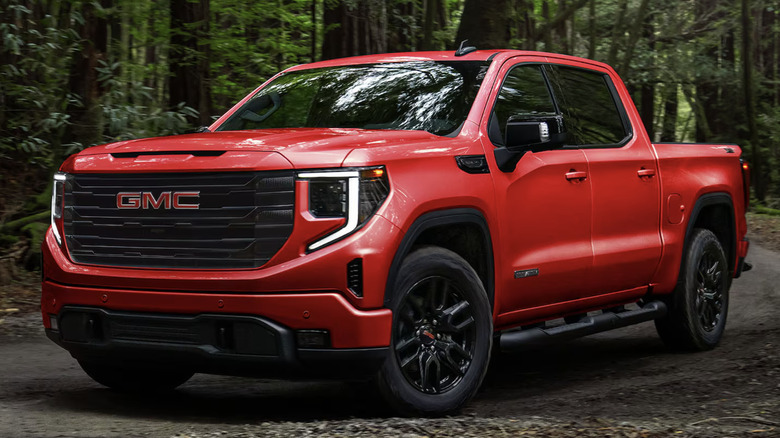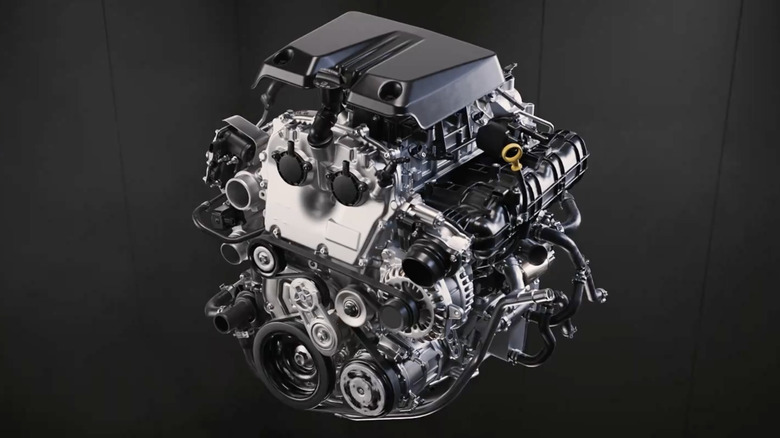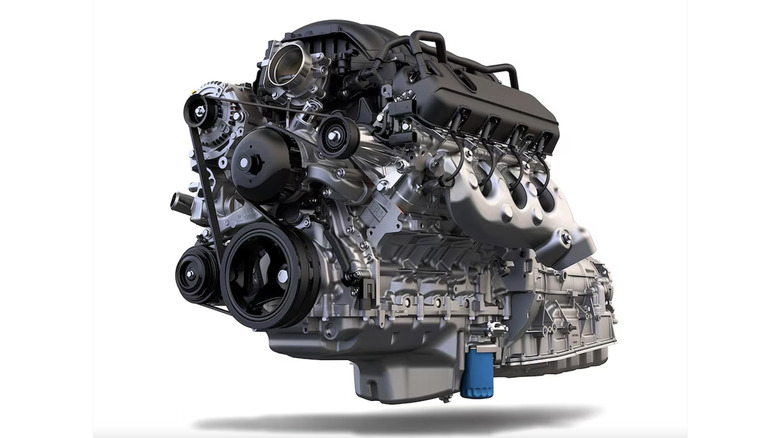GMC 2.7L TurboMax Vs. 5.3L V8 Engine: How To Know Which Is Better For You
While we often associate pickup trucks' towing and hauling capability with big V8 powerplants, those aren't always the best engine for the job. Manufacturers like GMC have been producing V8s for decades, but smaller, more efficient engines can easily complete all the same daily tasks like commuting and people-carrying without breaking a sweat.
Entry-level engines like turbocharged four-cylinders and V6s are often capable of handling the big jobs, too. Stuff like towing and hauling can be done in most entry-level full-size pickups, and they typically offer better fuel economy as a trade-off for their slightly diminished payload and trailering capacity.
That's the idea behind engines like the 2.7-liter TurboMax, anyway. The turbocharged 2.7-liter four-cylinder engine is about half the size of its big brother — GM's stalwart 5.3-liter V8 — but it can cover much of the same ground. With increased torque for 2024, the TurboMax puts up serious towing and payload numbers, and it offers a bit of fuel savings as well. Is it enough to make V8 enthusiasts stray from one of the most reliable engines in GM's lineup and consider a "lesser" engine? Let's take a closer look at these two powertrains and see which one is better.
2.7-liter TurboMax
The GMC Sierra 1500's 2.7-liter engine was introduced in 2019, and it offers quite a bit of power and torque for its size. When it debuted, the inline four-cylinder engine produced 310 horsepower and 348 pound-feet of torque. In 2022, the 2.7-liter engine was updated, with an increased torque output of 430 pound-feet, a 20% increase over the original rating. Now, for 2024, they've given the 2.7-liter the "TurboMax" moniker.
While 310 horsepower and 430 pound-feet of torque may not seem like a lot of grunt for a full-size pickup truck, the 2024 Sierra 1500 with the TurboMax has a maximum towing capability of 9,500 pounds — more than enough for a loaded car trailer or a medium-sized boat.
The TurboMax is also pretty impressive in the payload department. In its two-wheel drive configuration, with the TurboMax, the Sierra 1500 has a maximum payload of 2,240 pounds. That's much more than the max payload for the larger optional engines — the 6.2-liter V8 and the 3.0-liter diesel engine. Both of those optional engines top out at just under 1,900 pounds in maximum payload.
The long-running 5.3-liter V8
The 5.3-liter V8 is a popular engine in the GMC lineup — also known as the EcoTec3 engine — available in the Sierra 1500 for several years. In the Sierra 1500, the 5.3-liter V8 makes 355 horsepower and 383 pound-feet of torque. That's 45 horsepower more than the TurboMax engine, but 47 pound-feet less torque. Thankfully, the 5.3-liter engine matches the 2.7-liter when it comes to payload. In two-wheel drive configurations, the V8 has a max payload of 2,240 pounds. With four-wheel drive, it tops out at 2,110 pounds — just 10 pounds shy of the TurboMax's four-wheel-drive max payload. So, it's essentially a tie.
However, the V8 has a big advantage in the towing department. The 5.3-liter V8's maximum towing capability with two-wheel drive is 11,200 pounds, and with four-wheel drive, it's 11,000 pounds. That's an increase of 1,700 and 1,800 pounds, respectively. Fuel economy is where things get evened out a bit. The TurboMax engine gets fuel economy estimates from the EPA as high as 20 mpg combined. With the V8, the highest fuel economy estimate is 18 mpg combined.
The 5.3-liter V8 isn't cheap either. On most trim levels, it's at least a $1,595 upgrade — add that to the cost of fuel, and the price tag begins to balloon a bit. Ultimately, the decision comes down to what you use the truck for regularly, but if towing isn't your top priority, the 2.7-liter four-cylinder is certainly worth considering.


